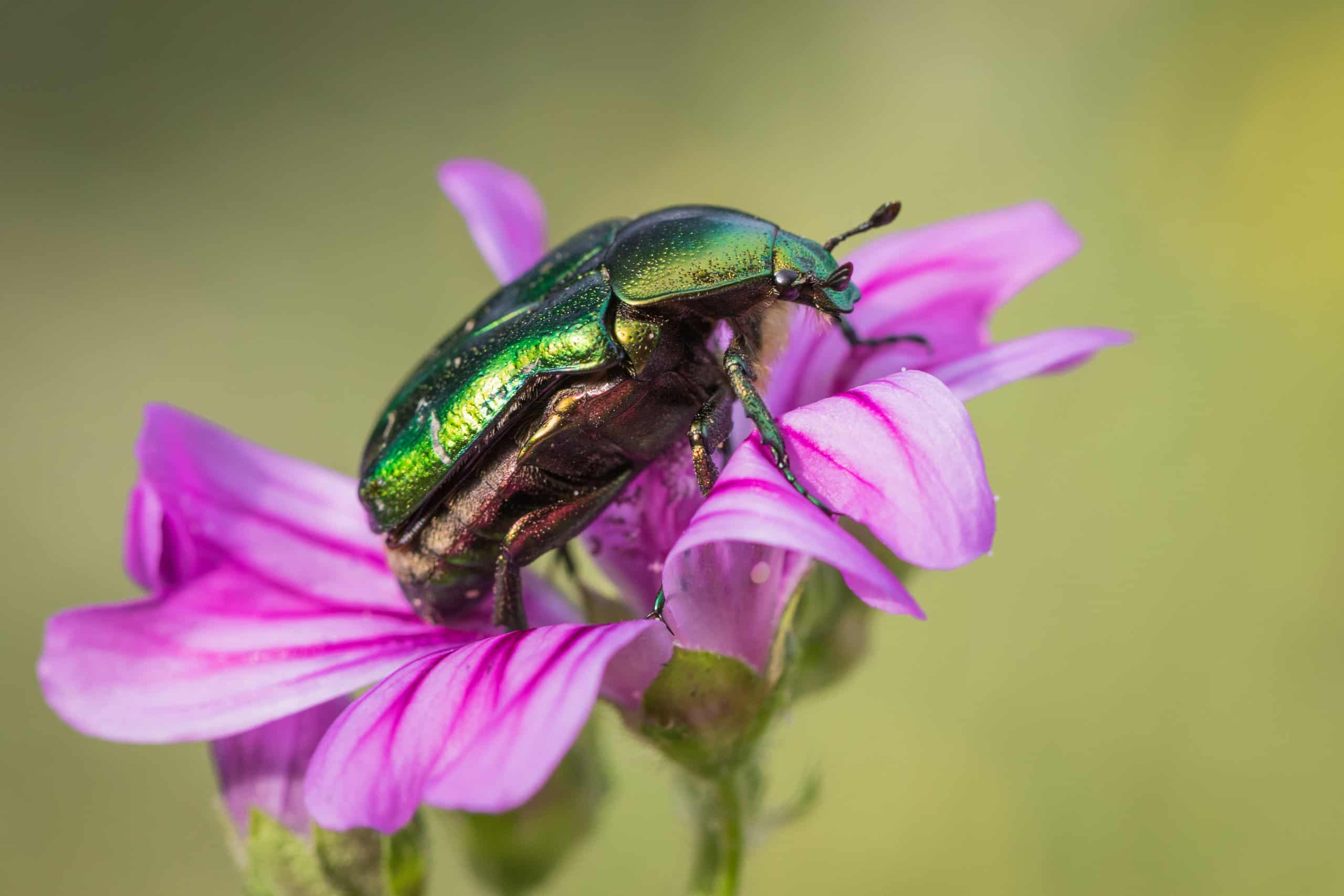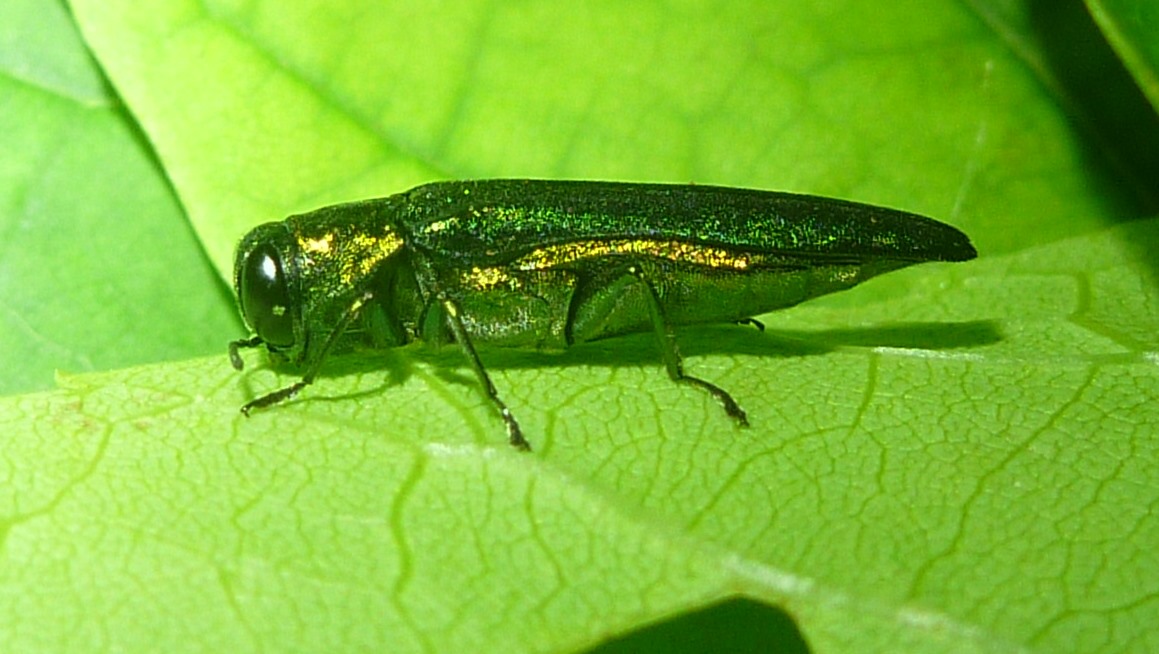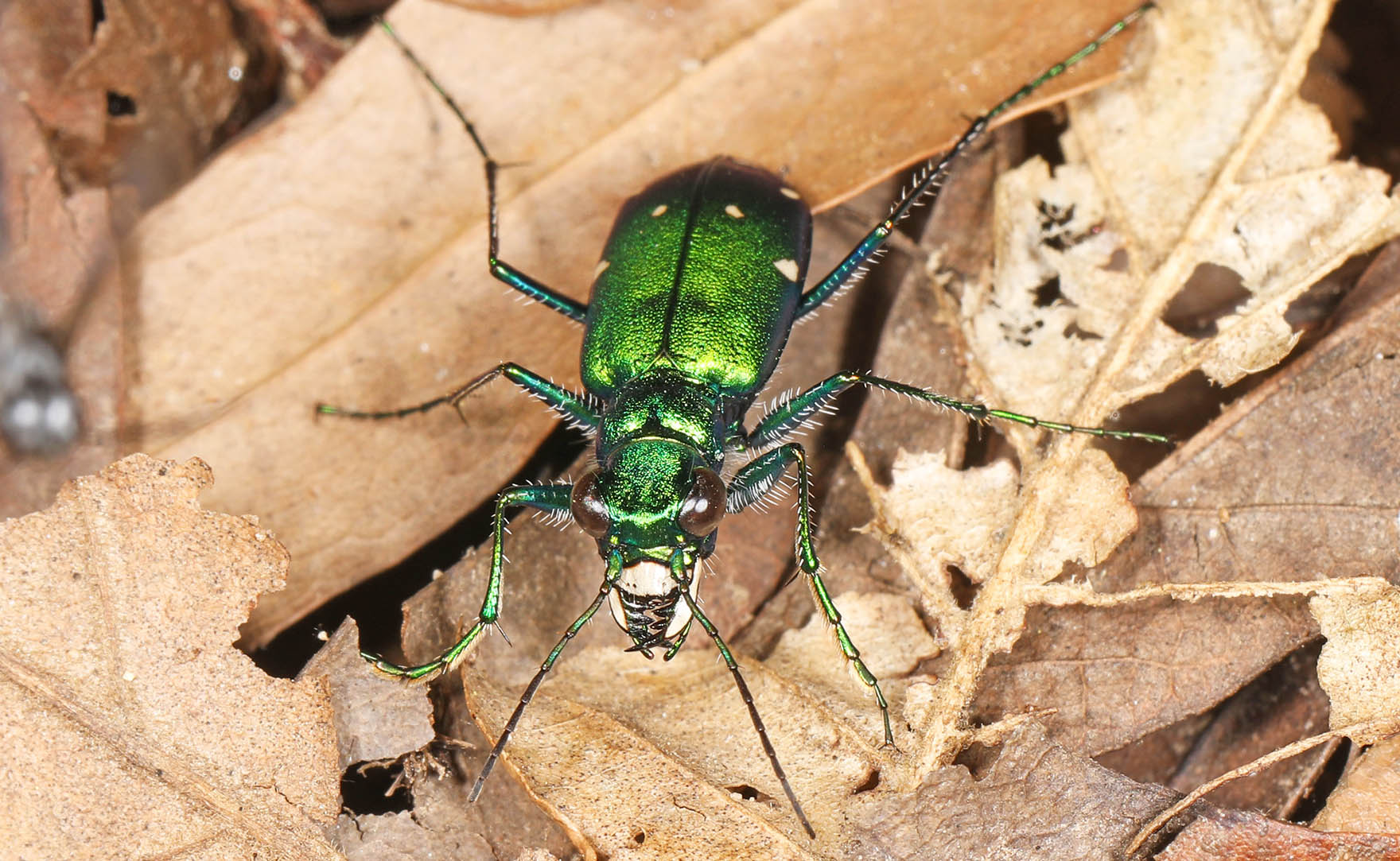Beetles are fascinating insects that belong to the order Coleoptera, which means “sheathed wing” in Greek. With over 350,000 identified species, beetles are the largest group of organisms on Earth, and they demonstrate significant variations in physical attributes, including color.
Green beetles are a common type of beetle that can be found around the world. In this article, we will discover 10 different types of green beetles, including their size, where they can be found, and more. From the Glorious Scarab Beetle to the Rose Chafer, let’s explore the world of green beetles.
You are reading: Discover 10 Types Of Green Beetles

10 Types Of Green Beetles
Glorious Scarab Beetle
The Glorious Scarab Beetle, also known as the Glorious Beetle, is a species of scarab beetle that is found in the southern United States and northern Mexico.
Its common name comes from its bright green color and iridescent stripes on the elytra, which can also be red or purple but are very rare. The adult beetles are 20 to 30 millimeters (0.8–1.2 in) long and are active both day and night, primarily seen from June to August.
The Glorious Scarab Beetle’s habitat is high elevation juniper forests, and its food of choice is the juniper leaf. The larvae feed on decaying wood from Arizona sycamore. The Glorious Scarab Beetle can easily camouflage into the juniper trees due to its color.
Pale Green Weevil
The Pale Green Weevil, also known as the Leaf Weevil, is a species of broad-nosed weevil in the beetle family Curculionidae. Here are some interesting facts about the Pale Green Weevil:
– The Pale Green Weevil is bright green in color with linear ridges on the elytra (wing coverings).
– The green heads of the Pale Green Weevil are marked with large black eyes.
– The Pale Green Weevil is found in North America and South Asia.
– The Pale Green Weevil is found throughout the northern part of the United States and southern Canada.
– The Pale Green Weevil feeds on the leaves of deciduous trees and shrubs, including willow, birch, and alder.
– The larvae of the Pale Green Weevil feed on the roots of these same trees and shrubs.
– The Pale Green Weevil is active from May to September.
– The Pale Green Weevil is not considered a significant pest, but it can cause some damage to trees and shrubs.
Overall, the Pale Green Weevil is a fascinating beetle that can be found in many parts of North America. Its bright green color and unique ridges on the elytra make it a distinctive and interesting insect to observe.
Japanese Beetle
The Japanese Beetle (Popillia japonica) is a species of scarab beetle that is native to Japan and was first discovered in the United States in 1916 near Riverton, New Jersey. Here are some interesting facts about the Japanese Beetle:
Physical Characteristics
– The adult Japanese Beetle measures 15 mm (0.6 in) in length and 10 mm (0.4 in) in width.
– The Japanese Beetle has iridescent copper-colored elytra (wing coverings) and a green thorax and head.
Habitat and Distribution
– The Japanese Beetle is not very destructive in Japan, where it is controlled by natural predators, but in North America and some regions of Europe, it is a noted pest to roughly 300 species of plants, including rose bushes, grapes, hops, canna, crape myrtles, birch trees, linden trees, and others.
– Japanese Beetles were first found in the United States in 1916 near Riverton, New Jersey, and have since spread throughout most states east of the Mississippi River.
– Partial infestations also occur west of the Mississippi River in states such as Arkansas, Iowa, Kansas, Minnesota, Missouri, Nebraska, North Dakota, Oklahoma, and South Dakota.
Behavior and Control
– Japanese Beetles damage plants by skeletonizing the foliage (i.e., consuming only the material between a leaf’s veins) as well as, at times, feeding on a plant’s fruit.
– The subterranean larvae feed on the roots of grasses.
– Japanese Beetles are active from June to August.
– There are both nonchemical and insecticide options for managing Japanese Beetle adults and grubs.
– The Minnesota Department of Agriculture monitors this invasive species, and it is recommended to report Japanese Beetles found outside the seven county Twin Cities metropolitan and southeast areas of Minnesota to Arrest the Pest.
Overall, the Japanese Beetle is a significant pest of landscape trees and shrubs, vegetable and fruit crops, and turfgrass in the eastern United States. Its destructive feeding habits and wide range of host plants make it a challenging insect to control.
Figeater Beetle
The Figeater Beetle (Cotinis mutabilis), also known as the Green Fruit Beetle or Fig Beetle, is a member of the scarab beetle family and belongs to the subfamily Cetoniinae, which comprises a group of beetles commonly called flower chafers since many of them feed on pollen, nectar, or petals. Here are some interesting facts about the Figeater Beetle:
Physical Characteristics
– Adult Figeater Beetles grow to approximately 1.25 inches (3.2 cm) in length.
– Figeater Beetles have a metallic green color and are often mistaken for Green June Beetles (Cotinis nitida) and occasionally Japanese Beetles (Popillia japonica), which occur in the eastern US.
Habitat and Distribution
– The Figeater Beetle’s habitat is primarily the southwestern United States (including California) and Mexico.
– Figeater Beetles are found throughout the Southwestern United States.
– The Figeater Beetle is not native to southern California but immigrated there by way of the Colorado River.
Behavior and Control
– Figeater Beetles are active during the day and feed on fruit, including figs, as well as sap and nectar.
– Figeater Beetle larvae, commonly called “crawly backs,” roll on their backs and propel themselves upside down.
– Figeater Beetles are not considered a significant pest but can cause some damage to fruit trees.
– There are both nonchemical and insecticide options for managing Figeater Beetles.
Overall, the Figeater Beetle is a fascinating beetle that can be found in the southwestern United States and Mexico. Its metallic green color and unique behavior make it an interesting insect to observe.
Emerald Ash Borer

The Emerald Ash Borer (Agrilus planipennis) is a green buprestid or jewel beetle native to northeastern Asia that feeds on ash species. Here are some interesting facts about the Emerald Ash Borer:
Physical Characteristics
– The adult Emerald Ash Borer measures approximately 8.5 to 14 millimeters (0.33 to 0.55 in) in length.
– The Emerald Ash Borer has a metallic green color and a flattened back.
Habitat and Distribution
– The Emerald Ash Borer is native to China, Mongolia, North Korea, South Korea, Japan, Taiwan, and the Russian Far East.
– The Emerald Ash Borer was first discovered in North America in 2002 in southeastern Michigan.
– The Emerald Ash Borer has since spread to 30 states in the United States, including Alabama, Arkansas, Colorado, Connecticut, Delaware, Georgia, Illinois, Indiana, Iowa, Kansas, Louisiana, Maryland, Massachusetts, Michigan, Minnesota, Missouri, Nebraska, New Hampshire, New Jersey, New York, North Carolina, Ohio, Oklahoma, Pennsylvania, Tennessee, Texas, Virginia, West Virginia, and Wisconsin.
– The Emerald Ash Borer is highly destructive to ash trees native to Europe and North America.
Behavior and Control
– The Emerald Ash Borer lays eggs in bark crevices on ash trees, and larvae feed underneath the bark of ash trees to emerge as adults in one to two years.
– The Emerald Ash Borer is responsible for the destruction of tens of millions of ash trees in the United States.
– There are a variety of treatment options that can serve as a control measure for the Emerald Ash Borer, but they are not a cure.
– Homeowners should contact their state department of agriculture or local extension office for guidance on controlling Emerald Ash Borers.
Overall, the Emerald Ash Borer is a highly destructive wood-boring beetle that feeds on the phloem of ash trees. Its spread throughout North America has caused significant damage to ash trees, and control measures are necessary to prevent further destruction.
Green June Beetle
The Green June Beetle (Cotinis nitida) is a beetle of the family Scarabaeidae that is commonly found in the eastern United States and Canada, where it is most abundant in the South. Here are some interesting facts about the Green June Beetle:
Physical Characteristics
– The adult Green June Beetle is usually 15–22 mm (0.6–0.9 in) long with dull, metallic green wings; its sides are gold, and the head, legs, and underside are very bright shiny green.
– The Green June Beetle is sometimes confused with the related southwestern species Figeater Beetle (Cotinis mutabilis), which is less destructive.
Habitat and Distribution
– The Green June Beetle’s habitat extends from New Brunswick to Georgia, and as far west as California, with possible population crossover in Texas with their western cousin, the Figeater Beetle.
– Green June Beetles are found throughout the eastern United States and Canada.
Behavior and Control
– The Green June Beetle is active during daylight hours.
– The Green June Beetle feeds on fruit, including grapes, peaches, raspberry, blackberry, apple, pear, quince, plum, prune, apricot, and nectarine, and frequently feeds as well on the sap of oak, maple, and other trees, and on the growing ears of corn.
– The larvae feed on decaying organic matter in the soil or in well-rotted manure or compost piles.
– Adult Green June Beetles damage fruit by feeding on ripening fruits.
– There are both nonchemical and insecticide options for managing Green June Beetles.
Overall, the Green June Beetle is a fascinating beetle that can be found in many parts of the eastern United States and Canada. Its metallic green color and unique feeding habits make it an interesting insect to observe. However, it can also cause damage to fruit trees, and control measures may be necessary to prevent significant damage.
Dogbane Beetle
The Dogbane Beetle (Chrysochus auratus) is a member of the leaf beetle subfamily Eumolpinae and is primarily found east of the Rocky Mountains in the eastern United States and southern Canada. Here are some interesting facts about the Dogbane Beetle:
Physical Characteristics
– The adult Dogbane Beetle is 8-11 mm long and has a convex, oval shape.
– The Dogbane Beetle has an iridescent blue-green color with a metallic copper, golden, or crimson shine.
– The head of the Dogbane Beetle contains two widely set apart antennae.
Habitat and Distribution
– The Dogbane Beetle is found in areas where host plants live, mainly on dogbane plants (Apocynaceae), especially Indian hemp (Apocynum cannabinum) and spreading dogbane (A. androsaemifolium).
– The Dogbane Beetle is found throughout the eastern United States and southern Canada.
Behavior and Control
– The Dogbane Beetle feeds on dogbane plants, including milkweeds.
– The larvae of the Dogbane Beetle feed on the roots of dogbane plants.
– The Dogbane Beetle is not considered a significant pest but can cause some damage to dogbane plants.
– There are both nonchemical and insecticide options for managing Dogbane Beetles.
Overall, the Dogbane Beetle is a fascinating beetle that can be found in many parts of the eastern United States and southern Canada. Its iridescent blue-green color and unique feeding habits make it an interesting insect to observe.
Six-spotted Tiger Beetle

The Six-spotted Tiger Beetle (Cicindela sexguttata) is a common North American species of tiger beetle in the Cicindelinae subfamily. Here are some interesting facts about the Six-spotted Tiger Beetle:
Physical Characteristics
– The adult Six-spotted Tiger Beetle is 12-14 mm (1/2-5/8″) in length and has a bright metallic green color with six small white spots at the edges of its elytra (wing covers).
– The Six-spotted Tiger Beetle has large sickle-shaped mandibles, large bulging eyes, and long legs.
– The number of spots on the Six-spotted Tiger Beetle’s elytra can vary, and some individuals may have more or less than six spots.
Habitat and Distribution
– The Six-spotted Tiger Beetle is commonly found in deciduous forests in between Minnesota, Rhode Island, Ontario, and south to Kentucky.
– The Six-spotted Tiger Beetle is found throughout the eastern United States and southeastern Canada.
– The Six-spotted Tiger Beetle lives in loamy and sandy soils in eastern hardwood forests and is occasionally found in open pine forests.
Behavior and Control
– The Six-spotted Tiger Beetle is active from spring through early summer in openings in or next to wooded areas.
– The Six-spotted Tiger Beetle is an active hunter, chasing down prey as an adult.
– The larvae of the Six-spotted Tiger Beetle are ambush predators, lunging at prey from burrows in the soil.
– There are both nonchemical and insecticide options for managing Six-spotted Tiger Beetles.
Overall, the Six-spotted Tiger Beetle is a fascinating beetle that can be found in many parts of the eastern United States and southeastern Canada. Its metallic green color and unique spots on the elytra make it an interesting insect to observe.
Green Metallic Tiger Beetle
The Green Metallic Tiger Beetle, also known as the Six-spotted Green Tiger Beetle (Cicindela sexguttata), is a common North American species of tiger beetle in the Cicindelinae subfamily. Here are some interesting facts about the Green Metallic Tiger Beetle:
Physical Characteristics
– The adult Green Metallic Tiger Beetle is striking metallic green, sometimes blue, with long legs, large sickle-shaped mandibles, and large bulging eyes.
– The Green Metallic Tiger Beetle is named for the six small white spots at the edges of their elytra (wing covers), although the number of spots varies – beetles may also have two, four, eight, or even no spots.
– The adult Green Metallic Tiger Beetle is around half an inch (12-14mm) in length.
Habitat and Distribution
– The Green Metallic Tiger Beetle is commonly found in deciduous forests in between Minnesota, Rhode Island, Ontario, and south to Kentucky.
– The Green Metallic Tiger Beetle is found throughout the eastern United States and southeastern Canada.
Behavior and Control
– The Green Metallic Tiger Beetle is active from spring through early summer in openings in or next to wooded areas.
– The Green Metallic Tiger Beetle is an active hunter, chasing down prey as an adult.
– The larvae of the Green Metallic Tiger Beetle are ambush predators, lunging at prey from burrows in the soil.
– There are both nonchemical and insecticide options for managing Green Metallic Tiger Beetles.
Overall, the Green Metallic Tiger Beetle is a fascinating beetle that can be found in many parts of the eastern United States and southeastern Canada. Its metallic green color and unique spots on the elytra make it an interesting insect to observe.
Rose Chafer
Read more : The Top 8 Most Dangerous Spiders Of North America
The Rose Chafer (Cetonia aurata) is a beetle that is commonly found in Europe and parts of Asia. Here are some interesting facts about the Rose Chafer:
Physical Characteristics
– The adult Rose Chafer is around 20 millimeters (3/4 inch) long and has a metallic structurally colored green body with a distinct V-shaped scutellum.
– The underside of the beetle has a coppery color, and its upper side is sometimes bronze, copper, violet, blue/black, or gray.
– The Rose Chafer should not be confused with the North American Rose Chafer (Macrodactylus subspinosus), which is a different species.
Habitat and Distribution
– The Rose Chafer is commonly found in Europe and parts of Asia.
– The Rose Chafer is not found in North America, but the North American Rose Chafer (Macrodactylus subspinosus) is a similar-looking species.
Behavior and Control
– The Rose Chafer feeds on flowers, particularly roses and peonies, causing large, irregular holes.
– The Rose Chafer also feeds on the foliage of many trees, shrubs, and other plants, such as grape, apple, cherry, and birch, damaging leaves by eating the leaf tissue between the large veins, a type of injury known as skeletonizing.
– The Rose Chafer is not considered a significant pest but can cause some damage to plants.
– There are both nonchemical and insecticide options for managing Rose Chafers.
Overall, the Rose Chafer is a fascinating beetle that can be found in Europe and parts of Asia. Its metallic green color and unique feeding habits make it an interesting insect to observe.
FAQS
1. What is the scientific name of the Glorious Scarab Beetle?
The scientific name of the Glorious Scarab Beetle is unknown.
2. What is the habitat of the Green June Beetle?
The Green June Beetle’s habitat is in the southwestern United States and Mexico.
3. Are any of these green beetles considered pests?
Yes, some of these green beetles are considered pests, such as the Japanese Beetle, which is an invasive species in North America and feeds on the leaves, flowers, or fruit of more than 300 species of plants.
4. What do Green Metallic Tiger Beetles eat?
The Green Metallic Tiger Beetle is an active hunter and feeds on insects.
5. What is the size of the Rose Chafer?
The Rose Chafer is around 20 millimeters (3/4 inch) long.
6. What is the distribution of the Figeater Beetle?
The Figeater Beetle’s distribution is primarily the southwestern United States (including California) and Mexico.
7. What is the behavior of the Dogbane Beetle?
The Dogbane Beetle feeds on dogbane plants, including milkweeds.
8. What is the scientific name of the Pale Green Weevil?
The scientific name of the Pale Green Weevil is Polydrusus impressifrons.
9. What is the habitat of the Six-spotted Tiger Beetle?
The Six-spotted Tiger Beetle is commonly found in deciduous forests in between Minnesota, Rhode Island, Ontario, and south to Kentucky.
10. What is the distribution of the Emerald Ash Borer?
The Emerald Ash Borer is native to Asia and is an invasive species in North America. It has spread to 30 states in the United States, including Alabama, Arkansas, Colorado, Connecticut, Delaware, Georgia, Illinois, Indiana, Iowa, Kansas, Louisiana, Maryland, Massachusetts, Michigan, Minnesota, Missouri, Nebraska, New Hampshire, New Jersey, New York, North Carolina, Ohio, Oklahoma, Pennsylvania, Tennessee, Texas, Virginia, West Virginia, and Wisconsin.
Source: https://petstutorial.com
Category: Animals










